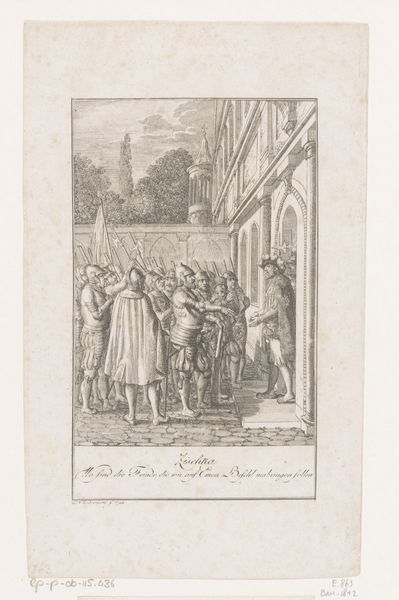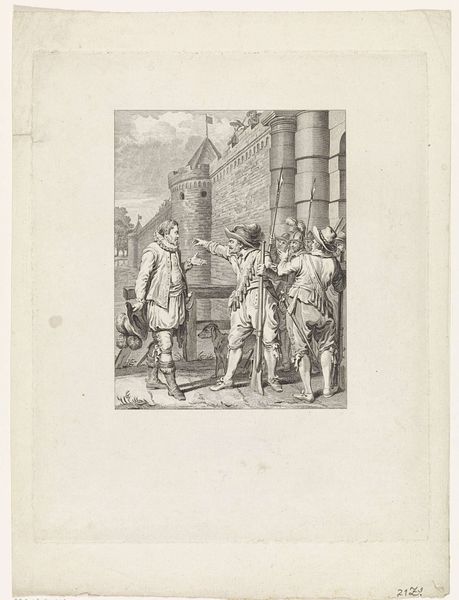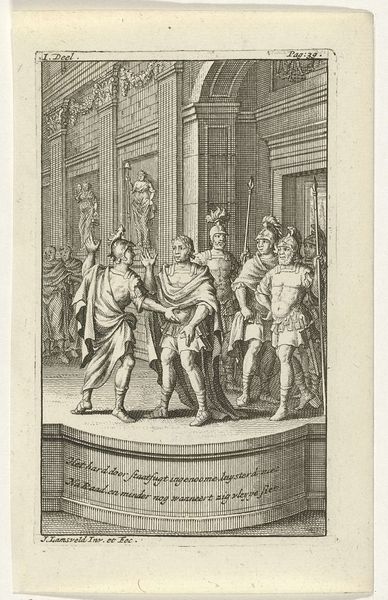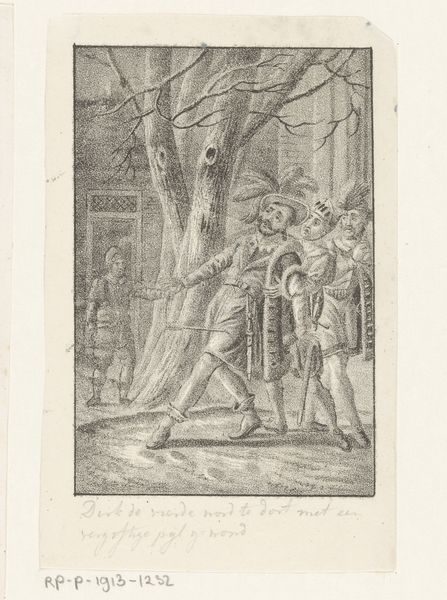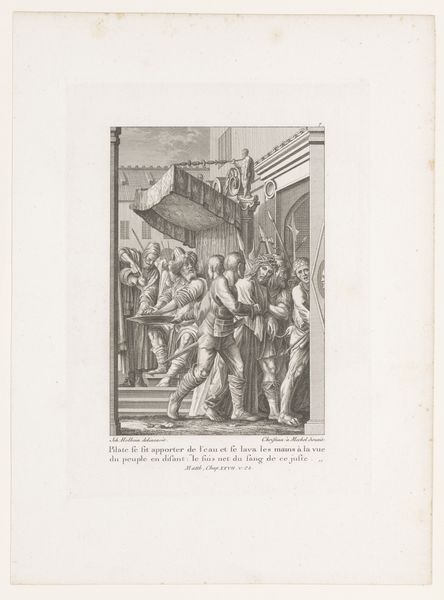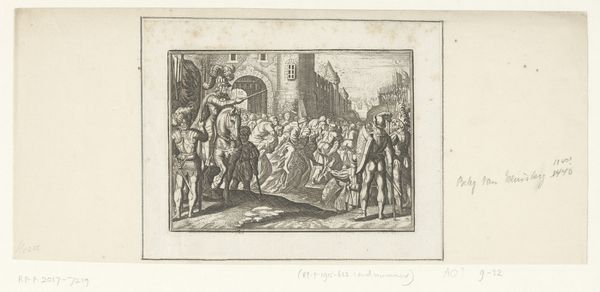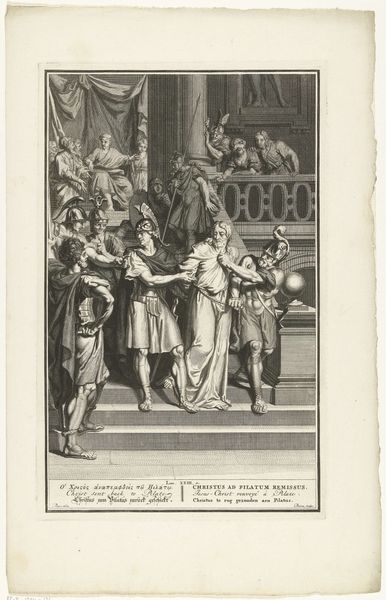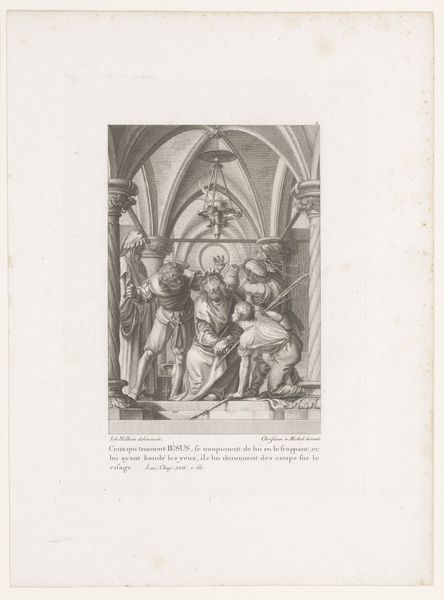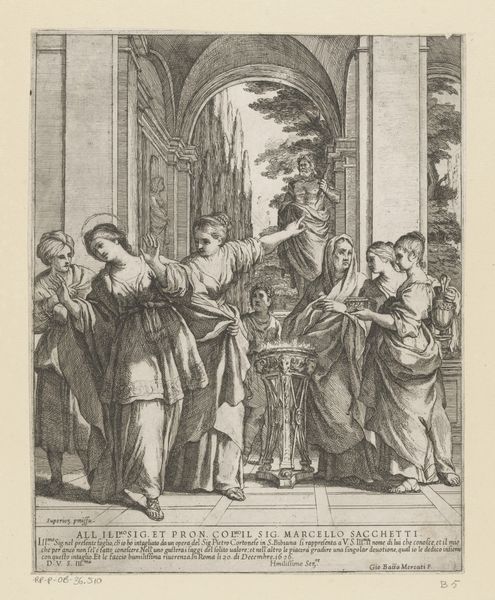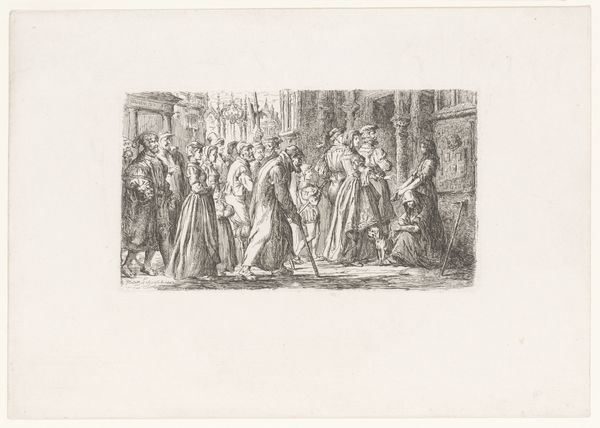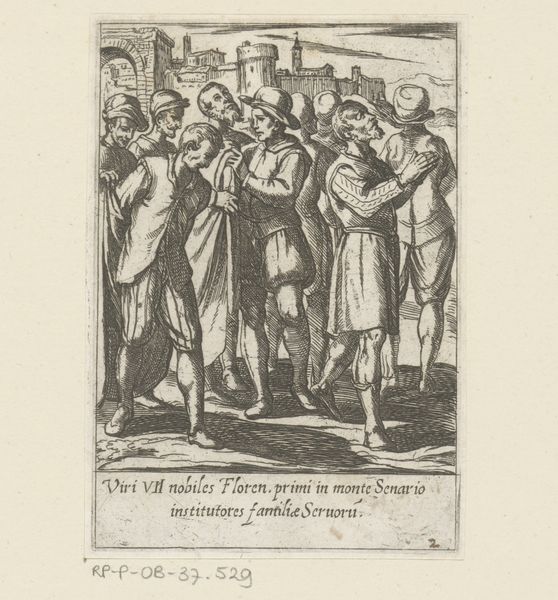
drawing, print, ink, engraving
#
drawing
#
neoclacissism
# print
#
old engraving style
#
figuration
#
romanesque
#
ink
#
line
#
genre-painting
#
history-painting
#
engraving
Dimensions: height 160 mm, width 90 mm
Copyright: Rijks Museum: Open Domain
Curator: This engraving is entitled "Keizer Hadrianus en de markt bij Voorburg," placing Emperor Hadrian and a market scene near Voorburg on display. It dates from between 1809 and 1899, embodying a fascinating interpretation of history through, seemingly, a neoclassical lens. Editor: My first thought is how delicate and precise the line work is, the technique is very linear, and this gives the whole piece a strangely ethereal quality despite depicting something as mundane as a market scene. I wonder about the choice of the print, too—an accessible medium for illustrating the Emperor? Curator: Precisely. Prints like this, circulating widely, were instrumental in shaping public perceptions of historical figures. Here, Hadrian's depiction isn't merely biographical; it serves as a symbolic connection between the Roman Empire and the burgeoning sense of Dutch national identity. Editor: It's fascinating how the engraving—being a reproduction—amplifies this agenda. The lines, though meticulously rendered, remind me of mass production. And given it being between 1809-1899 raises questions regarding industrial print making techniques too and its distribution throughout that period. Who made the prints, how and why. Curator: The level of detail suggests an artisanal workshop likely produced this piece, skilled engravers, possibly with academic ties or a state funded initiative which reinforces historical narratives favorable to the ruling elite of that time, connecting the present with a glorified past. The choice of subject—Hadrian—adds a layer of cultural cachet, imbuing the print with both historical weight and artistic value that would appeal to the upper classes in society and even be seen as an aspirational ideal, which may be different based on other potential interpretations such as the opposite, to display it was still relevant by trying to be different. Editor: Yes, it is the physical impression one gets. This level of control needed is amazing. A level of industrial processing and skill which creates the effect of something light and almost not there when that in itself, creates a lot of labour, and by creating multiples, these were made for distribution rather than high end artistic endeavors, they give it all the historical narrative for me. Curator: Looking at it that way sheds some light on how artwork is reproduced, viewed, reinterpreted. A reproduction holds new values and gives it a modern light compared to the historical one. Thank you for your insights! Editor: My pleasure! Always insightful examining art, materials and context in tow.
Comments
No comments
Be the first to comment and join the conversation on the ultimate creative platform.
